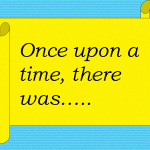“Are you serious about doing business with me?”
Diana was a real talent: a former Director of Development for another nonprofit organization who was working part-time these days while raising very young twins. We were lucky she was available. Our nonprofit organization had a lot of grant proposals to write in a short span of time and could not do it all ourselves. But here she was, fuming.
“Dennis, you introduced me to your Executive Director and everything appeared to go well. I sent her a proposal over a week ago. I’ve called and left voice mail messages. I’ve reached out to her by email. She’s just not calling me back. Do you have any idea what’s going on?”
I knew the Executive Director wanted to work with this consultant, and that we were just on the edge of losing her. Never mind that it was 2010, in the depths of the Great Recession, and our anti-poverty agency was working harder than it ever had before. We had not treated this highly professional woman with the courtesy she deserved. It was up to me to win her back.
“Diana,” I said, “I know we have been really, really slow to respond to you, and I want to let you know that we do want to work with you. In fact, we need to work with you. It’s just that we’re so stressed out right now that we haven’t had the time or the clarity to do what would take the stress away. Please forgive us and be patient.”
“Too stressed to do what would take the stress away.” Diana had been there. So have I and, I’ll guess, so have you. Whether it’s hiring outside help for the short term or setting up systems for the long term, we say to ourselves that we’ll get around to that…once we take care of today’s to-do list. Then the day ends, we still haven’t relieved the stress, and so it goes on and on.
There is a way out of this self-defeating cycle. It involves knowing what comes first. For the way out: http://www.trippbraden.com/2015/02/27/relieve-stress-at-work/

